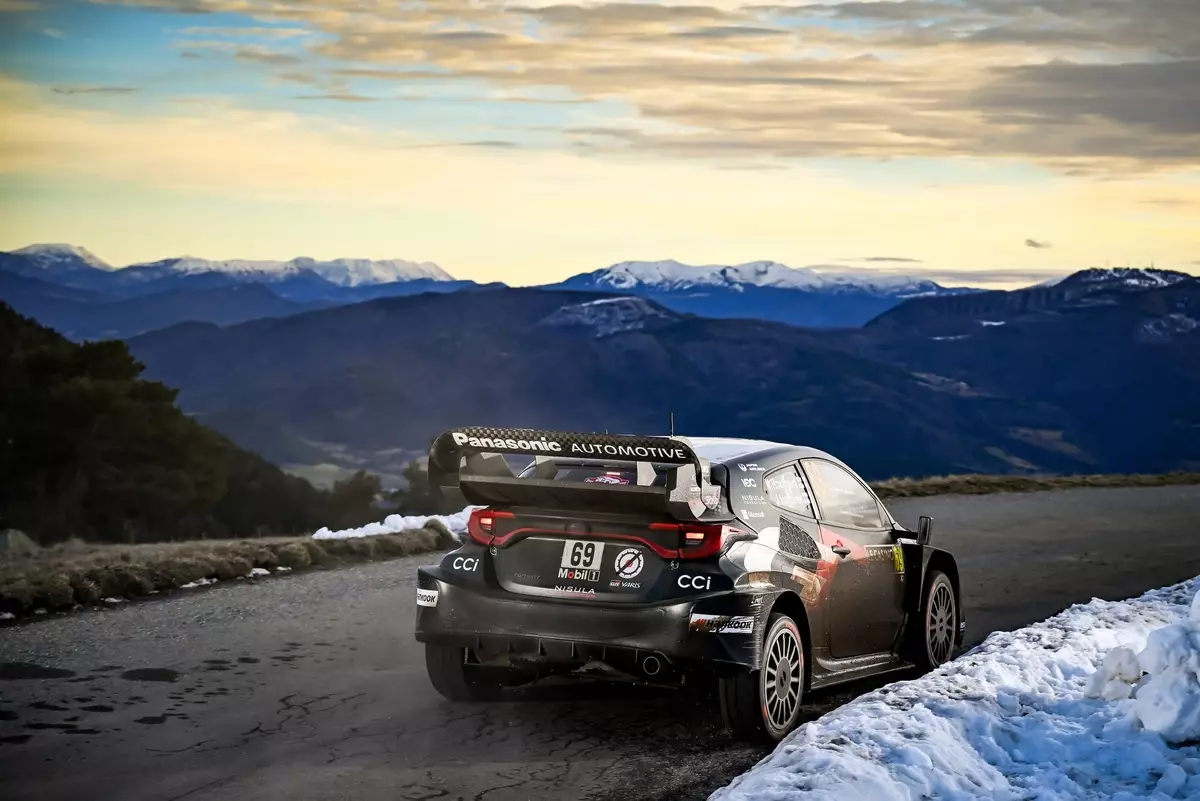As the World Rally Championship (WRC) opened its season in Monte Carlo, a familiar figure faced an unfamiliar challenge. Two-time world champion Kalle Rovanperä acknowledged the need to recalibrate his driving techniques to optimize performance with the newly introduced Hankook control tyres. Despite his prestige and previous accolades, this year’s event presented hurdles that tested his adaptability and skill behind the wheel.
Rovanperä’s experience at this year’s Monte Carlo rally made it evident that navigating change is not just a factor of technical adjustments but also a matter of altering one’s driving ethos. Throughout the early stages of the event, he encountered difficulties, particularly with the slick tyres. His performance oscillated, as Rovanperä noted, “I think overall it is pretty clear that maybe the driving style that I normally have doesn’t work with the slick tyre.” This admission shines a light on the often-overlooked complexity of modern rallying, where variable conditions and equipment can render even the most talented drivers uncharacteristically slow.
While Rovanperä managed to secure a stage victory on Friday, his overall standing left much to be desired. Coming in fourth and trailing 38.5 seconds behind his fellow Toyota teammate, Sébastien Ogier, he recognized that the calibration of his car setup was not entirely to blame. “It is just how to be quick with the tyres that is the issue,” he stated concisely. Such reflections suggest a deeper internal struggle, a potential crisis of confidence against the backdrop of high expectations.
Interestingly, Rovanperä’s challenges are not entirely unprecedented. He encountered similar hurdles when the WRC transitioned to the Rally1 concept in 2022. Even then, he struggled but showcased a remarkable ability to adjust quickly, ultimately finishing fourth before going on to seize the championship. This historical context serves as a double-edged sword; while it indicates his capacity for quick adaptation, it also heightens the stakes for his current performance.
When asked whether finding the right approach during the rally was feasible or if it required more time, his response hinted at patience and resilience. “Of course we have done it previously, but it was a different kind of issue,” he said. This perspective emphasizes the importance of a systematic approach to problem-solving in racing. Understanding that the vehicle feels right, yet the tyres are the limiting factor, requires targeted strategy adjustments rather than broad, sweeping changes.
Rovanperä’s trials came amidst a notably successful display for the Toyota team. His teammate Ogier seized the lead from Elfyn Evans following a momentary loss of control for Evans, underscoring the unpredictability characterizing the Monte Carlo course. Remarkably, Ogier’s victory in his home stage drew on a wealth of experience, though he too admitted, “It was not a perfect day.”
The juxtaposition of Ogier’s success against Rovanperä’s struggles encapsulates the unpredictable nature of motorsport. As teams adapt to evolving regulations and tyre technology, the balance of performance can readily shift. While Rovanperä seeks to refine his techniques with the new tyres, Ogier’s methodologies seemed to align more successfully, raising questions about the nuances of driving styles suited for contemporary rallying conditions.
As the WRC season unfolds, the narrative surrounding Kalle Rovanperä is one of growth and adaptation. He finds himself at a crucial crossroads, where aligning his driving style with the demands of the new Hankook tyres will be essential for his aspirations moving forward. The journey extends beyond immediate results; it involves a keen understanding of the evolving dynamics of rallying and a willingness to embrace change.
While the early stages of the Monte Carlo rally tested Rovanperä’s mettle, the potential for resurgence always exists in the world of motorsport. The ability to adapt is ultimately what defines champions, and with every passing stage, lessons learned may be the catalyst for Rovanperä’s return to form, setting the stage for an exhilarating season ahead.


Leave a Reply